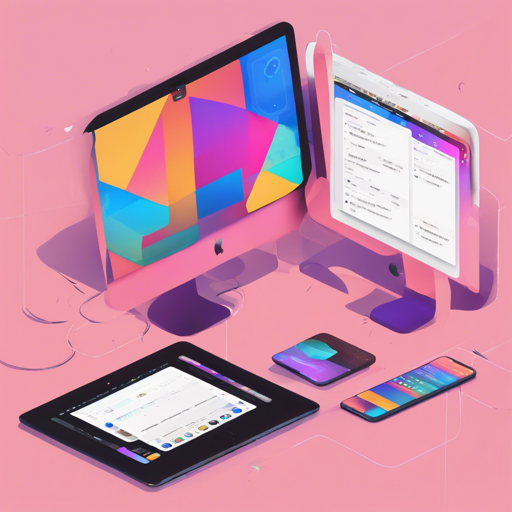If you’re a developer looking to give your Flutter applications a polished, native macOS feel, you’re in the right place! In this article, we will explore how to use the macos_ui package, which provides Flutter widgets and themes built to comply with macOS design guidelines. Let’s craft your Mac-like interfaces together!
Getting Started: Installation
Before you dive into using macos_ui, you need to ensure that your Flutter application is set up correctly.
- Make sure you’re using the stable channel of Flutter.
- Since macos_ui is specifically designed for macOS, ensure that your app runs on the macOS platform to avoid unexpected errors.
Using macos_ui Widgets
Using macos_ui is akin to building a house. Think of your widgets as the diverse building materials that you use to create a beautiful and functional structure. Just like how bricks, wood, and glass come together to build a house, Flutter widgets assemble into graphical user interfaces.
MacosWindow(
sidebar: Sidebar(
builder: (context, scrollController) => SidebarItems(
items: const [
SidebarItem(label: Text('Home')),
SidebarItem(label: Text('Settings')),
],
),
),
)In this code, define a MacosWindow containing a Sidebar filled with SidebarItems. Here’s a breakdown of our construction:
- MacosWindow: Your overall structure.
- Sidebar: The compartments for easy navigation.
- SidebarItems: The detailed settings and sections visible to users.
Key Features and Functionalities
1. Customization and Appearance
The macos_ui package allows significant customization to ensure the app mirrors the macOS aesthetic. For example, you can set your deployment target to 10.14.6 to ensure the smoothest experience.
const config = MacosWindowUtilsConfig(
toolbarStyle: NSWindowToolbarStyle.unified,
);2. Popups and Toolbars
Just like kitchen cabinets need handles, your app requires functional elements like popups and toolbars for navigation and action. A typical use of a toolbar might look like this:
ToolBar(
title: const Text('My App'),
actions: [
ToolBarIconButton(
label: 'Add',
icon: const MacosIcon(CupertinoIcons.add),
onPressed: () => print('Add pressed'),
),
],
)This toolbar provides essential controls quickly, allowing users to perform tasks like “Add” without fuss.
Troubleshooting Common Issues
If you encounter issues while using macos_ui, here are some troubleshooting tips:
- Widget Rendering Issues: Ensure that your widgets are placed inside the correct parent widgets like
MacosScaffoldorMacosWindow. - Performance Lag: Always use the stable channel of Flutter for optimal performance.
- Debbugging Native Code Issues: If you use native code, consult the macOS Human Interface Guidelines to ensure compliance.
For more insights, updates, or to collaborate on AI development projects, stay connected with fxis.ai.
Conclusion
At fxis.ai, we believe that such advancements are crucial for the future of AI, as they enable more comprehensive and effective solutions. Our team is continually exploring new methodologies to push the envelope in artificial intelligence, ensuring that our clients benefit from the latest technological innovations.
By utilizing the macos_ui package, you can create visually appealing and user-friendly applications that resonate with the macOS experience. Happy coding!

